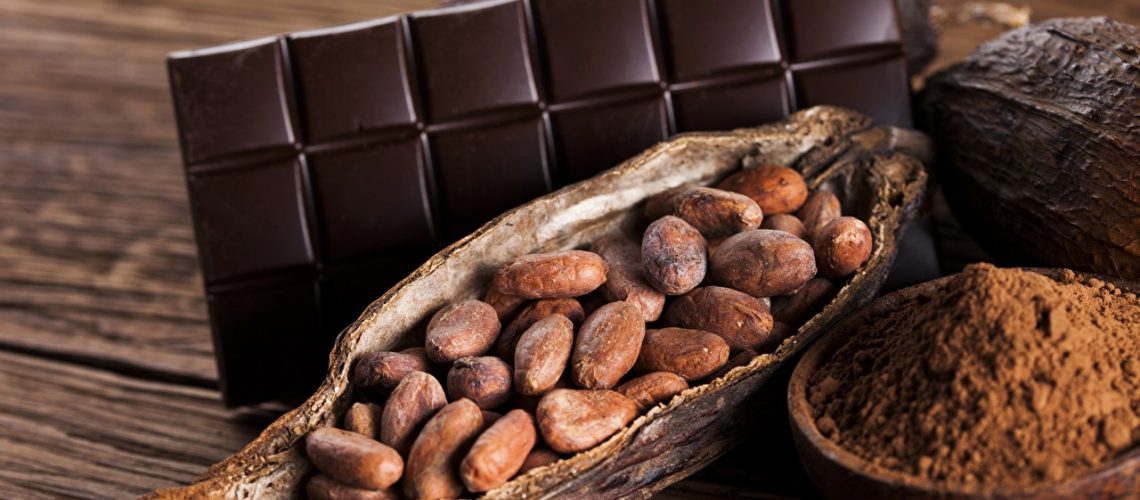After the cocoa industry was blamed for the many child labour scandals and because cocoa producers were being paid prices that were far too low, large chocolate companies took initiatives to improve the sustainability. What is the current situation, particularly after the cocoa price on the world market dropped significantly last year?
Even while market conditions are tough, across cocoa-producing regions cooperatives resolutely choose for sustainable or organic production and fair trade. Twenty of these cooperatives are supported by the Trade for Development Centre (TDC). To put a face on their endeavours, we visited Ghana and Côte d’Ivoire as well as Bolivia and Vietnam.
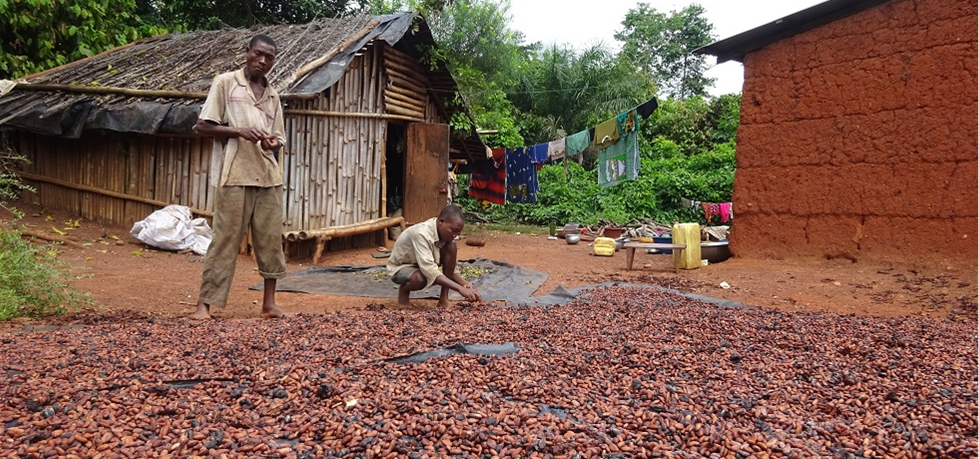
Part 1: Turmoil in cocoa country
Demand and supply
‘Enjoy chocolate while you can. In five years’ time it will cost a fortune.’ was headline news in 2014, when major chocolate players such as Mars and Barry Callebaut predicted that by 2020 cocoa production would fall short of demand. But the ICCO, the International Cocoa Organisation, immediately reacted that such conclusion was ‘overstated in the extreme’. ‘Over the past years, the cocoa market experienced years with production surplus and years with production deficit (…) and there is no immediate cause for concern.’ The debate did not affect the market much. Supported by the economic logic of slightly growing demand and little variation in supply the
global market price for cocoa steadily rose.
Until the end of 2016. Favourable weather conditions such as mild desert winds significantly boosted production in Côte d’Ivoire and Ghana. Suddenly, supply well surpassed demand and the market reacted accordingly. Mid-2017, the global market price plunged by more than a third to its lowest level in eight years. At the end of 2017, the situation remained unchanged.
But lower global market prices do affect cocoa farmers. Both Côte d’Ivoire and Ghana have government institutions that guarantee minimum prices. When the harvest started in March 2017, Côte d’Ivoire announced it was forced to lower the minimum price from 1,100 to 700 CFA per kilo (€ 1.06), i.e. a drop of 30%. Ghana decided to maintain its guaranteed minimum price, but the country announced it had already lost more than 1 billion dollars in export revenue. The question is how long the state treasury can be used as a buffer between the market and the farmers. Many planned projects, such as the construction of roads in cocoa country, were put on hold. Even purchasing crops was stopped for a while owing to a lack of funds. In addition, increasingly cocoa was being smuggled from Côte d’Ivoire into Ghana.
A price rise is not expected any time soon because weather conditions were fine this year as well.

Overviews in figures
- Some 3.5 million tonnes of cocoa is produced annually in some thirty countries.
- Approximately 60% of global production originates in two West African countries, i.e. Côte d’Ivoire and Ghana.
- 5 to 6 million family businesses ensure global production.
- A handful of mega-corporations trade, grind and process cocoa (OLAM, Cargill, ADM, Barry Callebaut).
- Almost 90% of chocolate production is in the hands of the big five: Mars, Mondelez International, Nestlé, Hershey and Ferrero.
- Only 6.6% of the revenue from the cocoa supply chain goes to the farmers.
7.6% goes to cocoa processors; 35.2% goes to chocolate makers; and 44.2% goes to retail.
(figures: Dedicated 2016 and VOICE 2015)
Bitter poverty
Nobody can deny there is one stable given in this whole story of fluctuating prices: bitter poverty for millions of cocoa farmers and their families. In its 2015 Cocoa Barometer, VOICE, a coalition of NGOs, calculated that a Côte d’Ivoire farmer should earn four times more to reach the poverty threshold of 2 dollars a day.
A study commissioned by Barry Callebaut and French development agency AFD calculated that Côte d’Ivoire farmers earn 0.91 dollar a day on average. The fact that many families depend entirely on mostly old cocoa trees further exacerbates the crisis. However, both studies were carried out prior to the decline of the global market price. In 2017, Laurent Pipitone, Director of the Economics Division of ICCO warned, ‘If prices remain at this level for a long time, farmers will suffer. Many will continue, because they lack an alternative. Others will stop producing cocoa.’
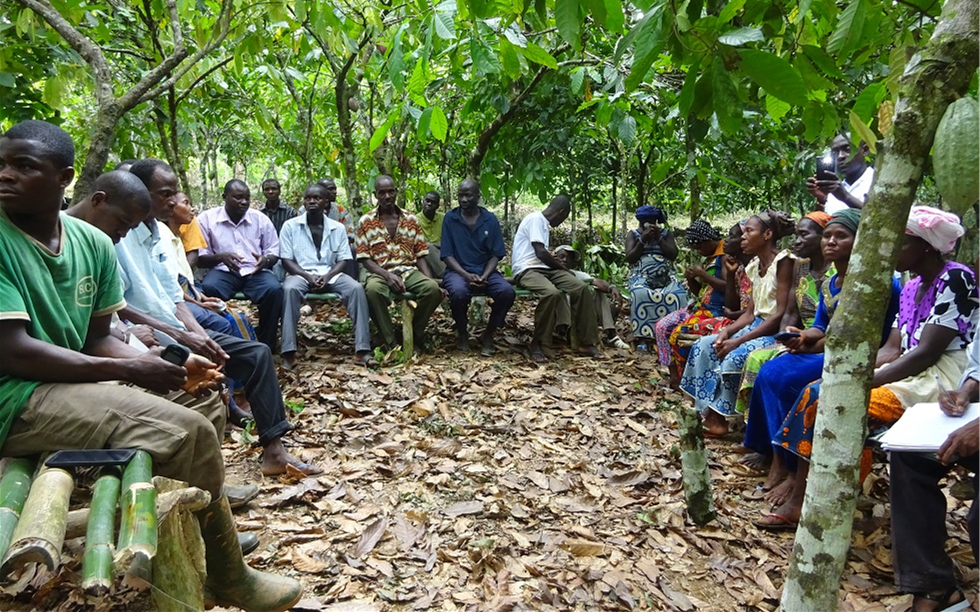
That was why in April 2017 VOICE issued an emergency call: ‘The Market’ was expected to balance supply and demand, thereby leading to the ‘right price’. However, the market has failed the majority of cocoa farmers. They are extremely poor and most of them are price takers, with little or no market power. The time has come to address some of the core design flaws of the system and pay farmers a higher ‘farm gate’ price, either by paying floor prices – as some smaller chocolate companies already do – or flexible premiums.’
The World Cocoa Foundation (WCF), an organisation in which all major sector companies are represented, admitted that current market conditions are not viable in the long term, but it also warned for market disruptions: ‘A cycle of higher prices induces over-supply. That is why we promote responsible consumption around the world, focusing particularly on emerging economies such as India, China, and Brazil.’ Anthonie Fountain, co-author of the VOICE report replied, ‘Everybody agrees that higher prices for farmers is not the only thing that needs to be done. Now, it seems the sector is willing to do anything, except pay higher prices to farmers.’

Child slavery
Nick Weatherill, Director of ICI, the International Cocoa Initiative, an organisation that uses industry funds to raise awareness in Ghana and Côte d’Ivoire, added another concern: ‘If these low prices translate into lower income for poor families and household poverty gets worse, we are worried that the risk of child labour will increase.’ This would indeed take us back to the roots of the public outcry two decades ago, when the news broke that twelve year old children were being sold as slaves to work at family plantations in Ghana and Côte d’Ivoire. Several international initiatives, both from governments and the industry, have been launched since.
According to the A Matter of Taste report of NGO Stop the Traffik, child labour is still a pressing issue. It compared the six main chocolate companies against eleven criteria, such as the use of a child labour monitoring system, investments in local communities and certification. The Nestlé Cocoa Plan, which was launched in 2009, obtained the best score.
Grand promises
Meanwhile, many within the cocoa sector point at another threat. Laurent Pipitone claims, ‘If prices remain at this level for a long time, it will impact the sustainability efforts made over the past few years.’ Cathy Pieters of Mondelez International is even more explicit: ‘It is to our advantage that Côte d’Ivoire farmers prosper. Low prices jeopardise our investments.’ And that way, the buzz word of the past few years has fallen: sustainability. Indeed, in response to public campaigns and political pressure on child slavery and poverty on cocoa plantation, all major sector companies deployed grand plans. Cadbury (now part of Mondelez) was the first major player to add certified products to its product range. Mars was the first to promise 100% sustainable chocolate by 2020. Ferrero and Hershey followed suit; Barry Callebaut is thinking of 2025; whereas Nestlé, Mondelez and Cargill do not want to pin a date on it.
These corporations differ in how they want to achieve their sustainable targets. Ferrero, Hershey and Mars opted for collaboration with external, independent certification schemes offered by Fairtrade, Utz and the Rainforest Alliance, in combination with their own projects in the field. Ferrero Farming Values (Ferrero), Learn to Grow (Hershey) and the Sustainable Cocoa Initiative (Mars) focus on the training of cocoa farmers and education for their children, improved production techniques and community building. Their latest progress reports shows the three of them at approximately 50% Fairtrade, Utz or Rainforest Alliance certified cocoa with tens of thousands of farmers participating in their training programmes.
Côte d’Or bars have displayed a green globe with a Cocoa Life reference. This is the name of their own sustainability programme of Mondelez International, which Côte d’Or belongs to. They work with Fairtrade International, but do not use the Fairtrade logo. By 2018 they aim to extend this system to the whole of the Cadbury product range. For Fairtrade International this is a completely new way of collaborating. It becomes a partner of the Cocoa Life programme in Ghana and helps to strengthen the cooperatives that supply cocoa to Mondelez. Farmers do not get guaranteed Fairtrade minimum prices, but they do get premiums that are comparable to the Fairtrade premium and Mondelez invests in training farmers and local development projects. According to the latest progress report Cocoa Life now reaches 92,000 farmers in 861 villages bringing Mondelez at 21% sustainable cocoa.
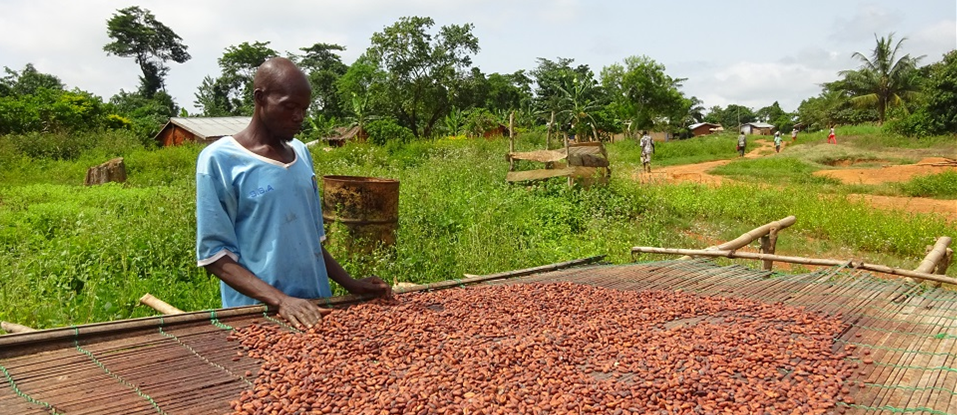
Nestlé has had its own ambitious Nestlé Cocoa Plan since 2009. It combines working with certifiers (primarily Utz) and training farmers. The flagship is the collaboration with 70 cooperatives in Côte d’Ivoire, which represent some 40,000 farmers, including the creation of a child labour monitoring system. Locally trained child labour agents and community liaison people operate in the communities to detect child labour and to coordinate interventions such as organising awareness raising campaigns, delivering educational materials or looking for alternatives to boost household revenue.
Do these plans actually make a difference? At the end of 2017 VOICE published a discussion paper calling all players in the cocoa supply chain – producing countries, certifiers and the private sector – to be more transparent. Annual reports list the scope of actions (so many villages covered by the plan with so many farmers reached and so many schools built) but more often than not the impact is not clear. ‘Building a school is irrelevant as such,’ claims Anthonie Fountain, ‘whereas whether that school boosts school attendance and leads to a drop in literacy is relevant. The same goes for training programmes for farmers. What effect does training have on productivity and revenue in particular? This is the only way that meaningful statements can be made about the ‘sustainability’ of such programmes.’
Certifiers en CEN/ISO
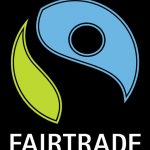 Fairtrade International
Fairtrade International
has managed the principal international fair trade label since 1988. There are two options for cocoa: on the one hand, there is the label on pack model, where a chocolate bar carries a blue and green logo (with other ingredients than cocoa such as sugar, nuts or vanilla being certified), and on the other hand, the Fairtrade Sourcing Program, where a company purchases a quantity of cocoa under Fairtrade conditions and processes it in its chocolate products, which the producer can advertise with a specific logo. Such mass balance system is also offered by Utz and the Rainforest Alliance.
 Rainforest Alliance
Rainforest Alliance
is an American NGO which first focused on protection of the environment and the promotion of biodiversity. Later, certification of sustainable crops followed. Even though there are a few social criteria (but unlike Fairtrade, no minimum price for the farmers), the focus is primarily on ecological aspects.
 UTZ
UTZ
is a Dutch-Belgian coffee sector initiative. Since 2002 the NGO has been very successful and it expanded into the cocoa sector. Utz emphasises training of farmers and the fight against child labour. Again, there is no minimum price. The Rainforest Alliance and Utz recently announced that they would gradually converge in view of a new standard and a merger in 2019. The organisation would carry on under the name of the Rainforest Alliance.
 CEN/ISO
CEN/ISO
In the chocolate supply chain, most chocolate companies now work with existing certification schemes. It remains unclear whether other schemes will be developed for sustainable cocoa in the future. Since 2011, CEN (European Committee for Standardization), the cupola of national standardisation organisations of 33 European countries, has been developing a ‘general standard for sustainable cocoa’. This is quite ambitious, especially since CEN is leaving its familiar terrain of quality and safety standards for a difficult concept such as sustainability. That is why ISO, the International Organization for Standardization, which has 163 member countries, was involved in the process and cocoa producing countries, companies and NGOs joined the effort.
The publication of the standard has been repeatedly postponed and was last due at the end of 2017. The possible impact of the standard on sector practices, the role of the certifiers or the life of the farmers remains unclear.
The Belgian market
In the Netherlands, Switzerland and the United Kingdom the market share of fair trade grew quickly after retailers resolutely made the switch.
In Belgium the retail sector has committed to sustainable chocolate, which is an important move also. Retailers often play a key role by offering products as well as by informing consumers and promoting sustainable consumption. In Belgium, Delhaize pioneered this approach. The retailer still offers a broad range of fair trade or sustainable-labelled products. Around ‘Sinterklaas’ and Easter also fair trade chocolate figurines are on offer. Also Carrefour started promoting fair trade. The company announced that Eclair, its pastry supplier, only uses Fair trade cocoa.
Since the end of 2017, ALDI’s house brand chocolate products are 100% sustainably certified. Likewise, Colruyt expects all cocoa suppliers of its house brands to be Utz certified. Lidl fully opts for Utz certified house brands in combination with a project in an agricultural school in Côte d’Ivoire.
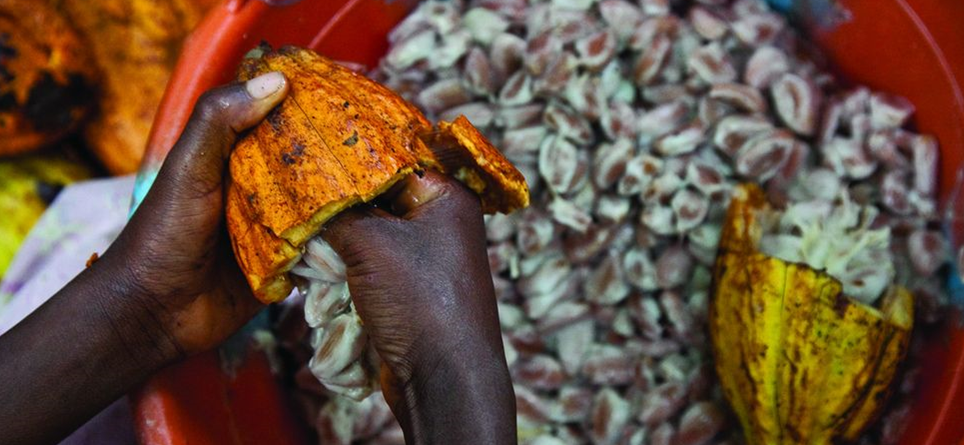
Part 2: the support of TDC
Better market access for vulnerable producers in the South is the basic idea behind the programmes of the Trade for Development Centre (TDC). Currently, the TDC supports twenty cocoa cooperatives or producer groups. Twelve of these – in Bolivia (1), Peru (7), Vietnam (1), Ghana (1) and Côte d’Ivoire (2) – are financially supported. Eight cooperatives in Côte d’Ivoire are receiving marketing support. To better understand the reality at the bottom of the cocoa supply chain we visited four producer groups in three continents.
Bolivian forest cocoa collectors
Yuracaré
The Yuracaré – an indigenous people – live in the Bolivian part of the Amazon Basin, in the central Bolivian lowlands north of Cochabamba. Collecting wild or forest cocoa – a chocolate lover’s quality product – is an important economic activity for this small community. Over the past decades, the habitat of the Yuracaré has been threatened by deforestation. Through the new constitution which provides indigenous communities with ‘native community lands’ the Yuracaré want to protect their way of life. That is why in 2011 the council of the Yuracaré Indigenous People created Arcasy (Asociación de Recolectores de Cacao Silvestre Yuracare) to fight deforestation and to find better sales channels for their wild cocoa. Now, the association represents some 176 forest cocoa collectors.
Collection centres
Over the past few years Arcasy put much energy in making a ‘Management plan for the collection of wild cocoa’. It did so in close collaboration with the Bolivian forest management agency. Such a plan is unique for Bolivia. On the one hand, it obliges the Yuracaré to protect the forest, while on the other hand, it lays down the right to collect, transport and commercialise wild cocoa for the domestic as well as the exports markets.
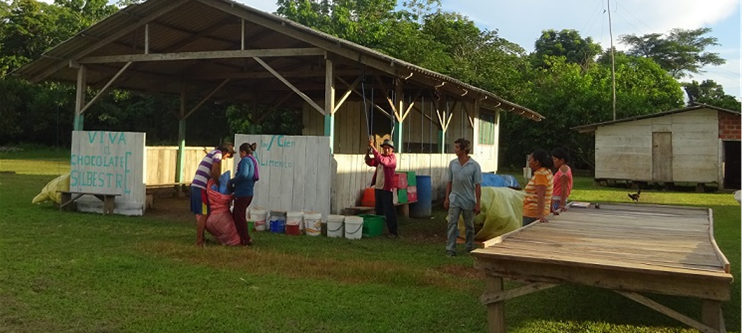
This Management plan was further detailed in annual ‘Collection plans’ for 11 determined areas. With project support of the TDC’s these 11 collection points were further developed. These are places where Arcasy members deliver their wild cocoa and get immediately paid at a price that is above the price offered by traditional middlemen.
At the same time, these centres become gathering places where families which live far and away are informed and trained on drying, fermentation and registration of cocoa in view of improving the quality and traceability.
Commercialisation
When the project started Arcasy had only two Bolivian cocoa businesses in its customers portfolio, but thanks to improved quality the organisation now can also venture onto demanding niche markets in the North.
Arcasy’s cocoa is not organic certified, but it fulfils all conditions, so certification can be quickly obtained in case existing or new customers would ask for it. The TDC project has borne fruit: between 2014 and 2017, Arcasy’s sales figures increased by 76%, which resulted in a 15% increase in revenue for collectors.
Vietnamese fair trade pioneers
Potential
Even though cocoa was already introduced to Vietnam by the French in the 19th century and the country’s climate and land are suitable for the crop, cocoa production remained marginal for more than a century. Only in 2000 was a government plan launched to promote cocoa growing in several regions. Later, major companies such as Cargill provided training programmes to farmers. Vietnam is still a marginal player on the cocoa market but it has potential. The NAPP (Network of Asia and Pacific Producers), the cupola organisation of more than 200 Fairtrade certified producer groups in Asia, also believes in the potential of Fairtrade cocoa. In the central highlands of the Vietnamese provinces of Dak Lak and Dak Nong, cocoa employs vulnerable farmer families, some of which belong to ethnic minorities. The NAPP strategy consists in bringing farmers together in cooperatives, to train them in sustainable production methods and to put them on the path to certification.
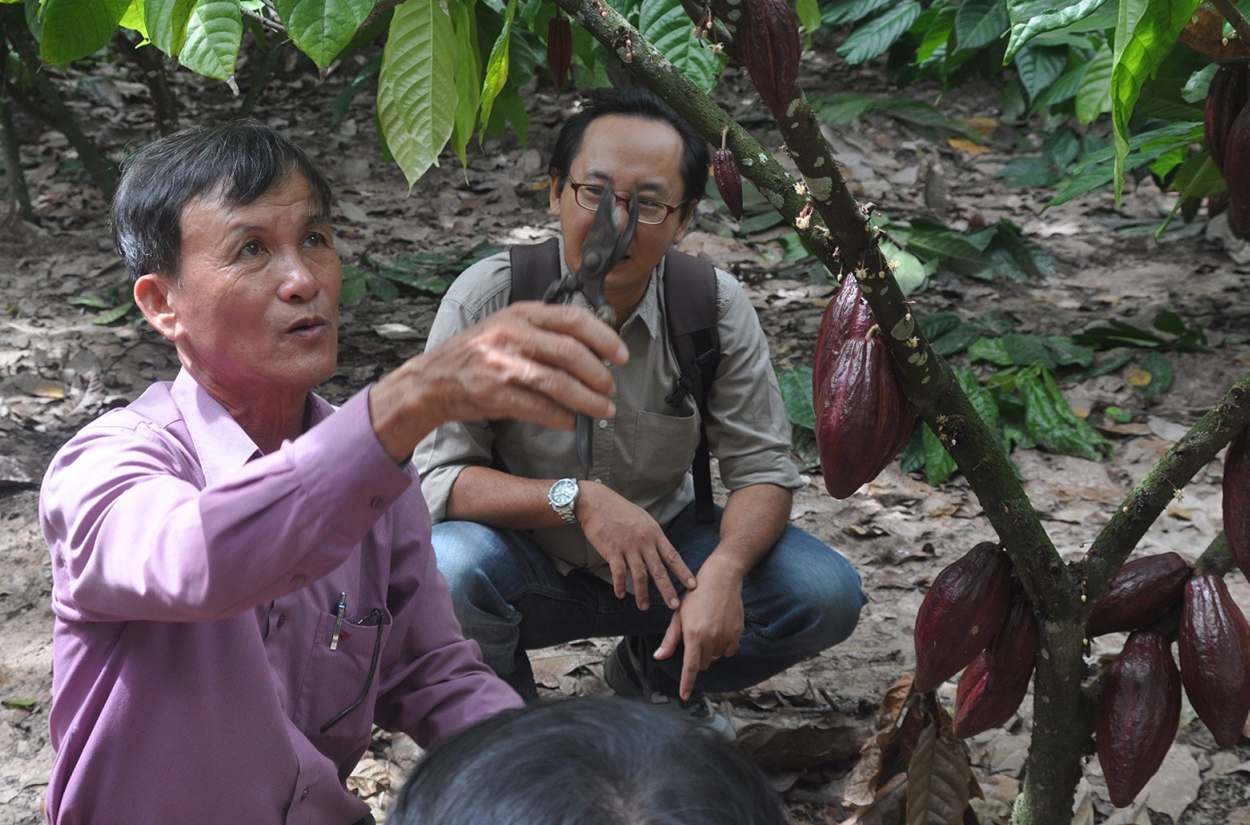
3 cooperatives, 387 families
The government plays a key role in Vietnam’s economy. That is why the NAPP was very pleased that the Vietnam Cooperative Alliance was interested in becoming a partner of the TDC-financed project. A first step was to identify cocoa cooperatives with potential. The Ea Kar cooperative was familiar with the fair trade concept because it also operates in the coffee sector, whereas Krong Nong was not familiar with the concept, and a third group, Thanh Dat, still needed to be formally turned into a cooperative. Together they represent 387 families. Approximately half of the members are women and 30% of members belong to ethnic minorities.
Over the course of 2016, training sessions were dispensed on Fairtrade standards. Meanwhile, the three cooperatives have been audited and obtained certification.
At the moment, they are producing 500 tonnes of dried fermented Fairtrade cocoa beans which has to lead the way to more sales. But the commercial challenges remain: a lot of buyers still need to be convinced to look further than traditional West African or Latin American supply chains. NAPP is trying to change this and has already taken several initiatives: launching a promotional film, being present at specialised trade shows and organising a network event for both Belgian and Vietnamese companies. The three cooperatives that receive TDC’s support are already in contact with Belgian company Puratos.

Cocoa from Ghana and Côte d’Ivoire
In West-Africa, the cocoa sector is different altogether. Major parts of Ghana and Côte d’Ivoire are strongly dependent of cocoa, providing a livelihood to millions of farm households. The TDC has also been operating in this region since 2016.
Trained farmers in Ghana
One of the many cooperatives in Central Ghana’s Ashanti region is the Kookoo Pa Farmers Association. The organisation originated with a programme of the Dutch NGO Solidaridad, which trained 352 farmers in sustainable production methods using the Utz standards. In 2009, the farmers decided to create an independent organisation to better defend their interests. Today, approximately 8600 farmers are members. The organisation’s focus is on expanding service delivery to its members through access to nursery plants, model farms and training. This is not solely about cocoa; alternative crops such as cassava and cooking banana are also promoted.
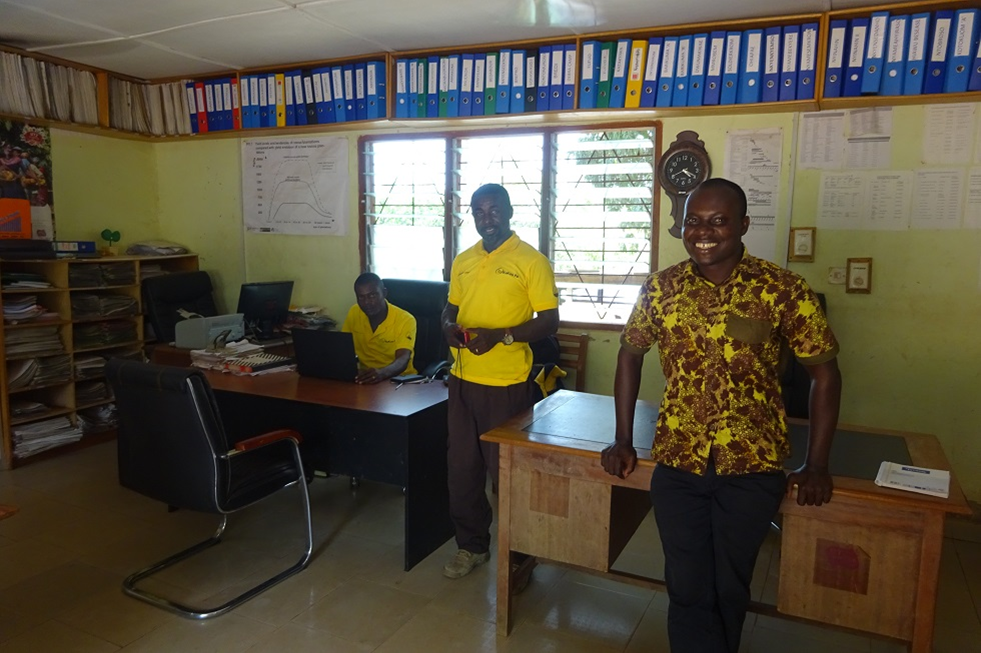
The current TDC project aims to involve 2000 new farmers from 40 villages in a programme that targets Utz certification. Meanwhile, every village has its own local committee elected as well as a community level facilitator (CLF). These CLFs get technical training about sustainable production techniques and how to obtain certification. In turn, they train their fellow villagers. Later, training for spray service providers, who are made accountable for the use of safe pesticides, will be organised. Women membership is an important matter. There are almost 3,000 women members, more than one-third of total membership. Meanwhile, as part of the new project 30 out of 40 villages have women’s groups. They embody the gender programme, which primarily aims to raise awareness among women about their rights and opportunities.
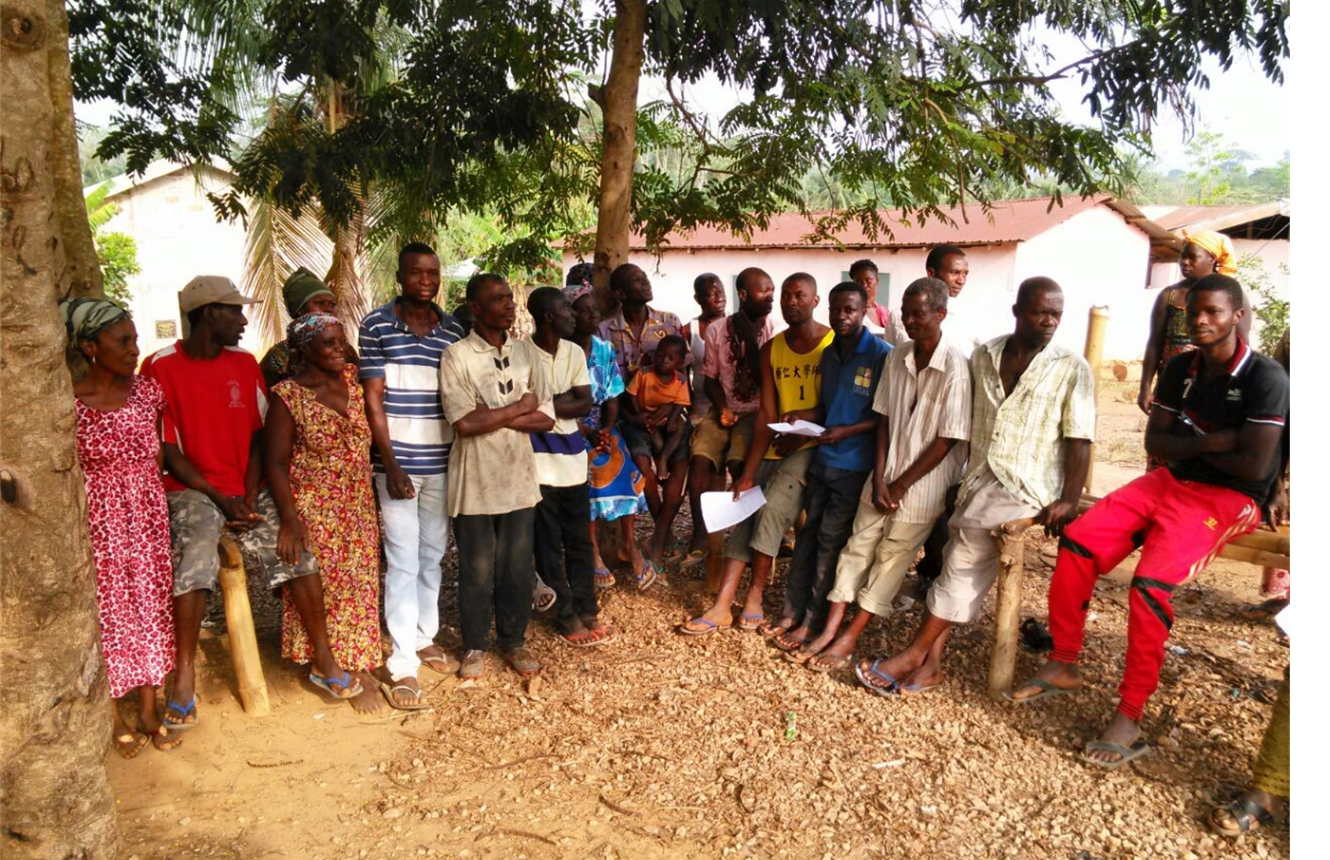
Centralised zones of COOPARA
The TDC also operates in Côte d’Ivoire. COOPARA was established in 2000 eighty kilometres north of Abidjan, the country’s main city. This organisation supports 639 cocoa farmers from the region to produce, process and market their cocoa
COOPARA aims to secure the future of cocoa production by focusing on sustainability. After all, the farmers face serious problems: aging plants, poor quality of cocoa and a thinning farmers’ population. The organisation launched a project with the TDC to improve the quality of cocoa and to harmonise production. The farmers are trained in fermentation, drying and storage processes, but the various steps are also centralised by sector. This is a major change because it was non-existent in the region! 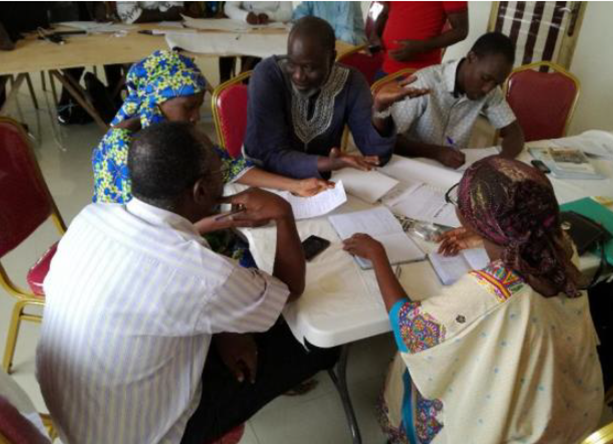
Two pilot projects have been successfully launched in two different sectors. The goal is to use this as a foundation to start up centralised zones in all sections of the cooperative.
Search for customers for SCINPA
As part of its marketing coaching programme the TDC currently accompanies eight cocoa cooperatives in Côte d’Ivoire. One of these is SCINPA (Société Coopérative Ivoirienne de Négoce des Produits Agricoles), which was established in 2003 in Agboville, just north of Abidjan. With its four buy-in sites SCINPA is a trustworthy partner reaching 3000 members in the region. The cooperative has progressed much and has built quite some trust over the years, for instance by investing in community projects such as schools and water pumps and because it has always defended the interests of farmers even during political turmoil. SCINPA has one major customer: Cargill. It co-sponsors Utz certification and the farmer field schools.
Regardless of all these positive points, this cooperative is also facing the typical problems of the bottom of the cocoa supply chain: Owing to cash problems they can only purchase part of their members’ crops and because of a lack of customers they can only sell a small share at Fairtrade conditions; after all, Cargill opts for Utz certification.
That is why SCINPA applied for the TDC’s marketing coaching programme. In the summer of 2016 it started with a preparatory session to map all data concerning volumes, turnover and revenue. A year later, the marketing coach of the TDC returned to Agboville to brainstorm with participants on strategies, target groups, messages and communication channels. Communication appeared to be the weak point for SCINPA. The communication budget of the TDC were used towards producing radio spots, a website, folders and brochures. Among the priorities were a brochure explaining things to farmers in words and images – for the illiterate among them! – how certification works, and a presentation brochure for potential customers. The latter was already used at the Salon du Chocolat in Paris at the end of October 2017.
The second coaching module in November 2017 coincided with the Salon International de l’Agriculture et des Ressources Animales (SARA), which draws big crowds and where SCINPA had a well-organised booth. The Minister of Agriculture and Sustainable Development and the Ambassador of the Netherlands, who promised to visit the cooperative, visited the booth. Since then, SCINPA has received more media attention, including an article in the Afrique Culture magazine and an interview on RTI, which was broadcast during prime time. A boost for visibility!
As the TDC projects in Ghana and Côte d’Ivoire were only launched in 2016, it is still too early to measure their impact. It is clear already that the cocoa farmers in the region face huge challenges. The need for sustainable cocoa production and improved market access, which the TDC provides, is considerable too.

